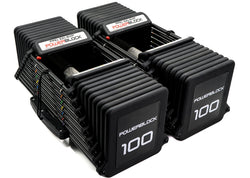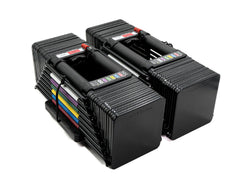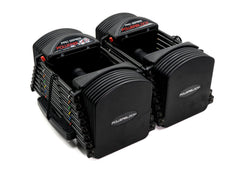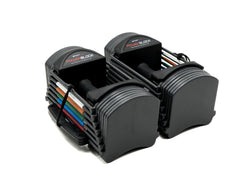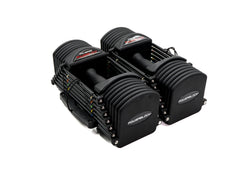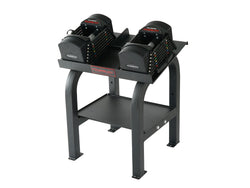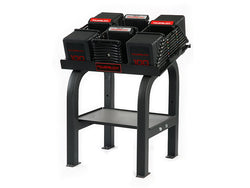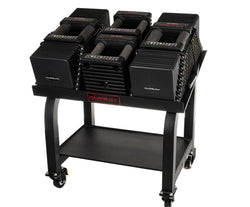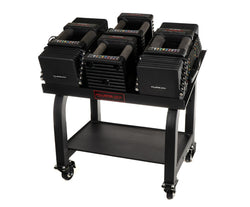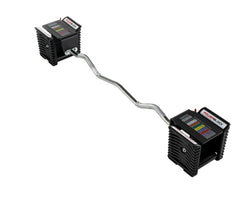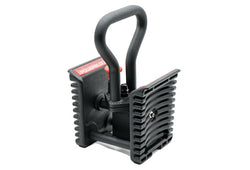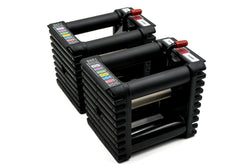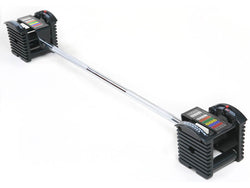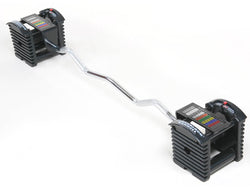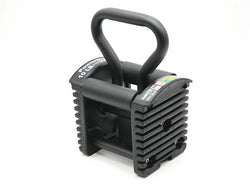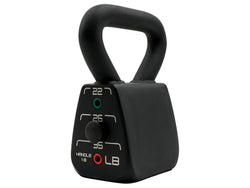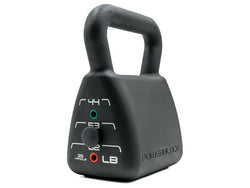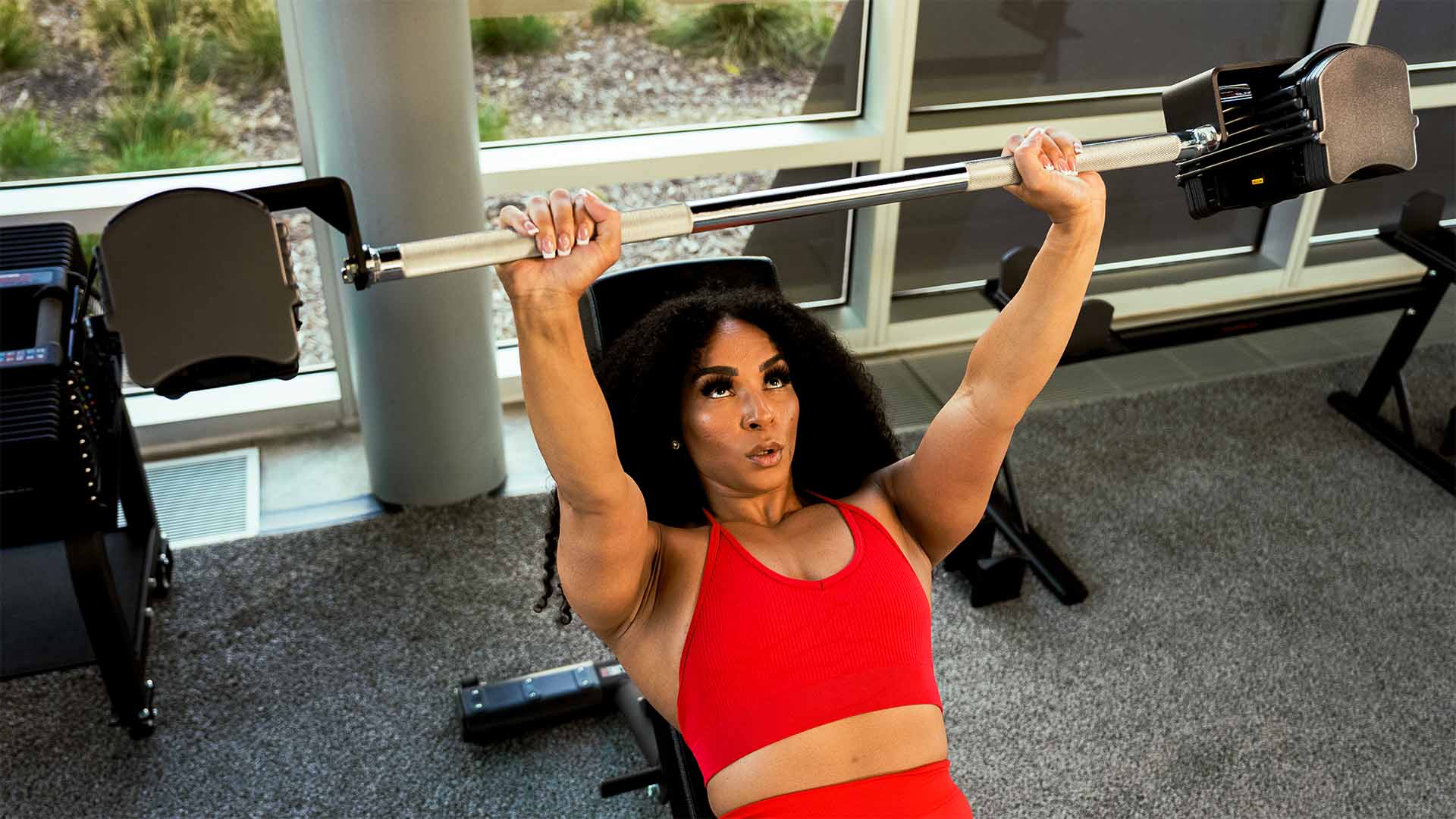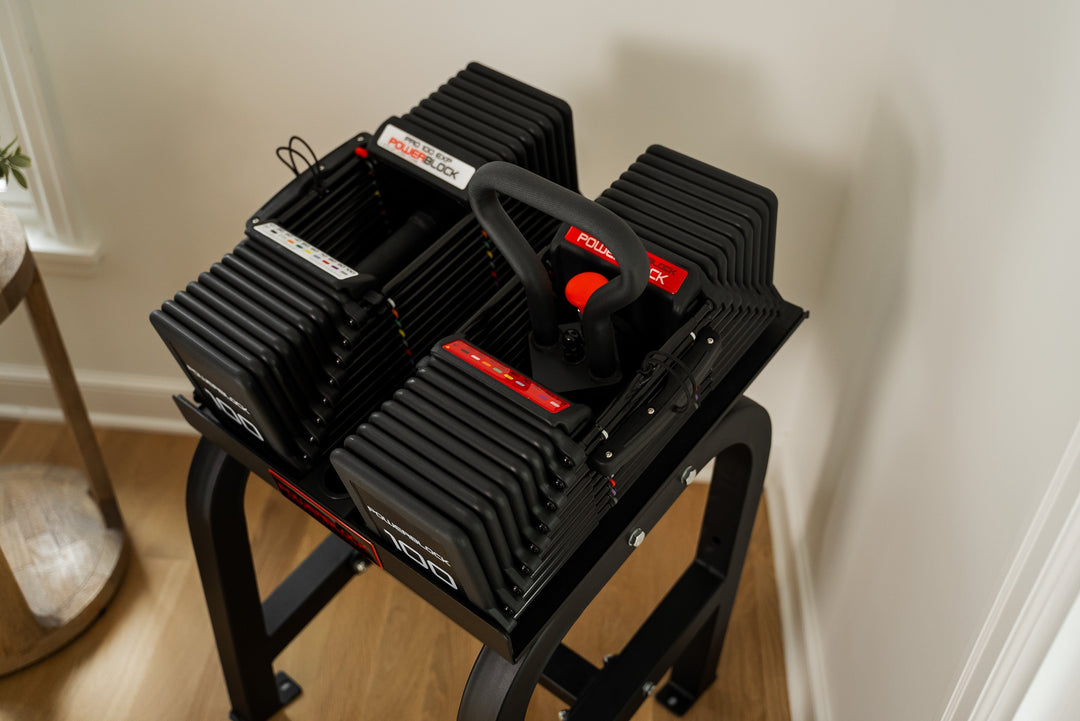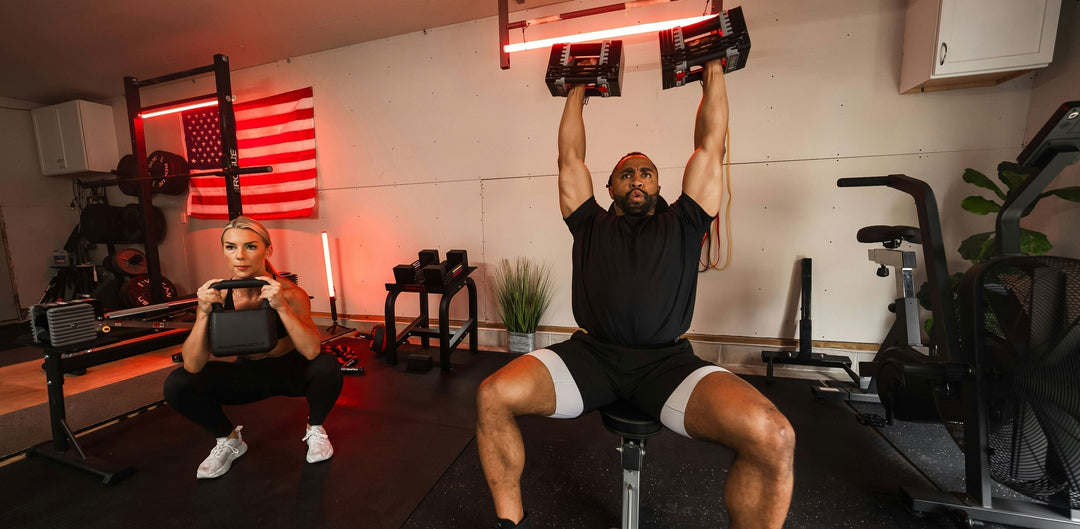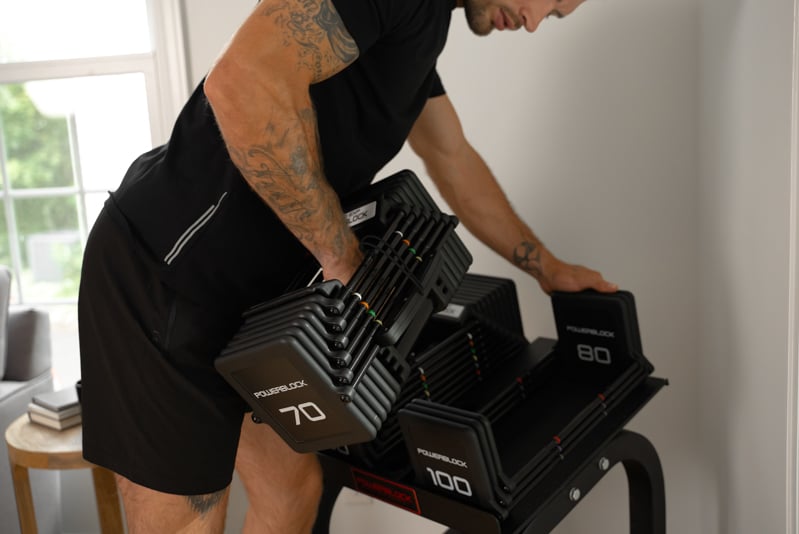As you progress through your fitness journey, your goals can change. Maybe you’ve been conquering each goal you set for yourself. Maybe, as you dive into living a healthier lifestyle, you’re discovering that certain movements cause pain, and you need to switch to something new. You’ve read into HIIT-style training and want to give it a shot. Now, the goal is to ensure you can use the dumbbells you have to add this style to your training to your workouts.
HIIT: What is it?
HIIT stands for High Intensity Interval training. For the most part, you go from a burst of all-out movement for some time to a short rest period. The benefit of HIIT is that it can increase your endurance and your body's ability to use the air you’re breathing, improving your cardiovascular fitness. HIIT is a time-focused training style, with most sets looking like 30 seconds on, 30 seconds off, or 30 seconds on 60 seconds off.
Timing and Workout Breakdown
With this time frame, you have two options for the exercises in your workout. To keep it simple, let's say you’re performing 4 total movements and 4 total sets for each of those movements. Your first option is to do it in a circuit, meaning you perform each exercise in order and then restart. The next option is the more traditional training style, meaning you would perform each exercise for 4 total sets, not moving to the next movement until you’ve completed all sets.
Time Efficiency
HIIT is a time-based workout, whether you’re doing circuit training or training more traditionally. You can get a solid workout in under 30 minutes. How the PowerBlock Adjustable Dumbbells are designed, you can save more time. Different parts of your body won’t be as strong as the other. Being able to quickly change weights during your workout will help you maximize your rest periods and challenge yourself during each set.
Customizing Intensity
The intensity of your workouts is fully dependent on you, your strength levels, and your goals. If your goals are more related to strength, you may be focusing on heavier weights and lower reps in the set. If you want to focus on your cardiovascular fitness, you may be more focused on lower weight and higher reps. Depending on how much time you can commit to your training, you may focus more on single-body part movements or full-body workouts.
Progressive Overload
Progressive overload training has two facets to it. The first part is within each workout. As you’re going through each set, whether circuit training or traditional, you incrementally increase the weight as each set ends and starts. For example, let's say you’re performing goblet squats. As you gear up for your first set, you may start with a lighter weight that is still challenging. So you set your dumbbell at 30 lbs. For the next set, you’d increase your weight to 40 lbs, the one after that 50 lbs, and lastly, you finish off the exercise with 60 lbs. In each set, the weight you’re moving is gradually heavier, challenging yourself a little more. The second part of progressive overload is what you’re moving week to week or month to month. Using the same example, instead of starting with 30 lbs, you start with 35 lbs, then move up to 45 lbs, and so on. This isn’t to say that you’re going to be gaining strength that fast week to week, more so a reminder to pay attention to how you’re feeling strength-wise going into your workout and going through each set. The caveat to progressive overload training is you might hit a plateau. Meaning you are not progressing in strength, week to week or month to month. In this case, switch things up. Instead of doing bilateral exercises, like goblet squats, switch to a unilateral movement like split stance or Bulgarian split squats. This change can help with both muscle and strength imbalances.
Cardiovascular intervals
The other training style is focusing on cardiovascular fitness. Your primary focus is to increase your heart rate, working the cardiac muscle (heart) to improve your endurance. This all comes down to increasing your VO2 Max. VO2 Max is how well your body can use the oxygen you’re breathing in. The more oxygen your body uses, the more energy it can use, in turn, you can put more into your workout and burn more calories. Let’s keep the same example as above, instead of starting with 30 lbs for your goblet squat, you start with 10 lbs. Still hammering out as many squats as you can, but you feel more out of breath. As time progresses, you will feel less winded and can perform more reps in your allotted time frame. You may be able to increase the working set time as well.
Split Workouts
A workout split is simply breaking your workouts down into individual body parts. A traditional “bro split” as some bodybuilders call it is 5 to 6 days and could look something like chest, back, legs, shoulder, and arms, or if you can only get 3 workouts in per week a push, pull, leg (PPL) split. Within a PPL split you train all upper body push muscles, chest, shoulders, and triceps. You train all of the upper body pull muscles, back, some shoulders, and biceps. Finishing off with working your legs, quads, hamstrings, glutes, adductors, abductors, and calves. How you set up your split is up to you and the time you set aside for your training.
Full Body Workout
A full-body workout is just as it sounds, your workouts hit the whole body. This isn’t to say that you have to train the same movements for each workout throughout the week. It’s more beneficial to have a variety of movements while training. A base rule of thumb is to have a leg, a push, a pull, and finally an accessory movement. The order in which you perform each movement path is up to you. One day your workout could look like a squat, then a bent-over row, then a shoulder press, and you finish it off with a biceps curl. The next workout could be a Romanian deadlift, then a high row, then a floor press, and then a tricep movement to finish it off. This variety will help give your body time to recover from the previous workout and you’ll still be hitting each muscle group throughout the week.
Putting it all together
So you now have a solid foundation of what type of HIIT training you can do with your PowerBlock Adjustable Dumbbells. It’s time for you to put this knowledge to work but with some help. Give each workout a try, give yourself some grace, and research some different exercises to switch things up. The split-based workout is going to be in a Push, Pull, Leg style and the full-body will be different movements each day.
Split Workout
Traditional
|
Push |
Sets |
Time in Set |
Rest |
|
Floor Chest Press |
4 |
30 sec |
60 sec |
|
Standing Shoulder Press |
4 |
30 sec |
60 sec |
|
Lateral Raise |
4 |
30 sec |
60 sec |
|
Dumbbell Skull Crusher |
4 |
30 sec |
60 sec |
|
Pull |
Sets |
Time in Set |
Rest |
|
Bentover Renegade Row |
4 |
30 sec |
60 sec |
|
High Row |
4 |
30 sec |
60 sec |
|
Rear Delt Fly |
4 |
30 sec |
60 sec |
|
Biceps Curl |
4 |
30 sec |
60 sec |
|
Legs |
Sets |
Time in Set |
Rest |
|
Goblet Squat |
4 |
30 sec |
60 sec |
|
Romanian Deadlift |
4 |
30 sec |
60 sec |
|
Wide Stance Squat |
4 |
30 sec |
60 sec |
|
Standing Calf Raises |
4 |
30 sec |
60 sec |
Circuit
|
Push |
Time in Set |
Rest |
|
Floor Chest Press |
30 sec |
60 sec |
|
Standing Shoulder Press |
30 sec |
60 sec |
|
Lateral Raise |
30 sec |
60 sec |
|
Dumbbell Skull Crusher |
30 sec |
60 sec |
Repeat 4 times
|
Pull |
Time in Set |
Rest |
|
Bentover Renegade Row |
30 sec |
60 sec |
|
High Row |
30 sec |
60 sec |
|
Rear Delt Fly |
30 sec |
60 sec |
|
Biceps Curl |
30 sec |
60 sec |
Repeat 4 times
|
Legs |
Time in Set |
Rest |
|
Goblet Squat |
30 sec |
60 sec |
|
Romanian Deadlift |
30 sec |
60 sec |
|
Wide Stance Squat |
30 sec |
60 sec |
|
Standing Calf Raises |
30 sec |
60 sec |
Repeat 4 times
Full Body Workout
Traditional
|
Full body 1 |
Sets |
Time in Set |
Rest |
|
Goblet Squat |
4 |
30 sec |
60 sec |
|
Bentover Row |
4 |
30 sec |
60 sec |
|
Shoulder Press |
4 |
30 sec |
60 sec |
|
Biceps Curl |
4 |
30 sec |
60 sec |
|
Full body 2 |
Sets |
Time in Set |
Rest |
|
Romanian Deadlift |
4 |
30 sec |
60 sec |
|
Upright Row |
4 |
30 sec |
60 sec |
|
Floor Chest Press |
4 |
30 sec |
60 sec |
|
Triceps Extension |
4 |
30 sec |
60 sec |
|
Full body 3 |
Sets |
Time in Set |
Rest |
|
Side Lunges |
4 |
30 sec |
60 sec |
|
Renegade Row |
4 |
30 sec |
60 sec |
|
Svend Press |
4 |
30 sec |
60 sec |
|
Zottman Curl |
4 |
30 sec |
60 sec |
Circuit
|
Full body 1 |
Time in Set |
Rest |
|
Goblet Squat |
30 sec |
60 sec |
|
Bentover Row |
30 sec |
60 sec |
|
Shoulder Press |
30 sec |
60 sec |
|
Biceps Curl |
30 sec |
60 sec |
Repeat 4 times
|
Full body 2 |
Time in Set |
Rest |
|
Romanian Deadlift |
30 sec |
60 sec |
|
Upright Row |
30 sec |
60 sec |
|
Floor Chest Press |
30 sec |
60 sec |
|
Triceps Extension |
30 sec |
60 sec |
Repeat 4 times
|
Full body 3 |
Time in Set |
Rest |
|
Side Lunges |
30 sec |
60 sec |
|
Renegade Row |
30 sec |
60 sec |
|
Svend Press |
30 sec |
60 sec |
|
Zottman Curl |
30 sec |
60 sec |
Repeat 4 times
You may notice that there isn’t specificity on whether or not to focus on progressive overload or cardiovascular intervals. That part is up to you and what your goals are. One week try the progressive overload style, and the next focus on cardiovascular intervals. See what feels good to start and then in 4-6 weeks, switch it up. As you progress through your workouts, gradually decrease your rest times by 15 seconds. If you want to spice things up, gradually increase your Time in Set by 15 seconds. How you train and progress is up to you.
